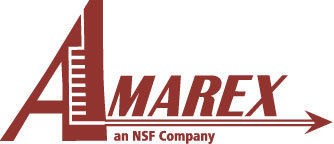- Home
- News and Resources
- Resources
- The Future of Wound Healing Is Regenerative
The Future of Wound Healing Is Regenerative
The wound care landscape is undergoing a radical transformation. Traditional dressings and topical treatments are giving way to regenerative therapies that harness the body’s own biology to accelerate healing, reduce scarring, and restore tissue function. From cell-based therapies to RNA-based interventions, the future of wound healing is biologic—and it’s already here.
In this blog, we explore the cutting-edge science, regulatory expectations, and preclinical strategies shaping the next generation of advanced wound care biologics.
1. Cell-Based Therapies: Healing from Within
Cell-based wound therapies are leading the charge in regenerative medicine. These treatments use living cells—such as fibroblasts, keratinocytes, or mesenchymal stem cells (MSCs)—to stimulate tissue repair, modulate inflammation, and promote angiogenesis.
Key applications include:
- Bioengineered skin substitutes
- Allogeneic stem cell therapies
- Autologous cell grafts for chronic wounds
These therapies are particularly promising for diabetic foot ulcers, burns, and venous leg ulcers, where traditional treatments often fall short.
2. UCB and siRNA: Next-Gen Biologics
Emerging biologics are pushing the boundaries of what’s possible in wound healing:
- Umbilical Cord Blood (UCB): Rich in growth factors and stem cells, UCB-derived products offer immunomodulatory and regenerative benefits with low rejection risk.
- Small Interfering RNA (siRNA): These molecules can selectively silence genes involved in inflammation or fibrosis, offering a highly targeted approach to wound modulation.
These platforms are still in early development but show strong potential in chronic wound management and scar prevention.
3. Preclinical Models: Proving Safety and Efficacy
Before entering clinical trials, biologic wound therapies must be validated in relevant preclinical models. The choice of model can significantly impact regulatory outcomes.
Common models include:
- Pig models: Closest to human skin in structure and healing response
- Rabbit ear models: Ideal for studying re-epithelialization and angiogenesis
- Chick embryo CAM assays: Useful for early-stage angiogenesis and toxicity screening
Selecting the right model—and designing the right endpoints—is critical for IND-enabling studies and FDA acceptance.
4. FDA Expectations for Biologic Wound Therapies
Biologic wound products are typically regulated under the Biologics License Application (BLA) pathway, overseen by the Center for Biologics Evaluation and Research (CBER). Sponsors must demonstrate:
- Purity, potency, and safety
- Robust preclinical and clinical data
- Compliance with cGMP and CMC requirements
Early engagement with the FDA through pre-IND meetings is strongly recommended to align on study design, endpoints, and manufacturing controls.
Ready to Advance Your Regenerative Therapy?
Whether you're developing a cell-based skin substitute, a UCB-derived gel, or an RNA-based wound modulator, Amarex can help you navigate the science and the strategy.
We support sponsors with:
- Preclinical study design and model selection
- IND and BLA regulatory strategy
- Clinical trial planning and FDA engagement
Let’s bring the future of wound healing to life—together.
